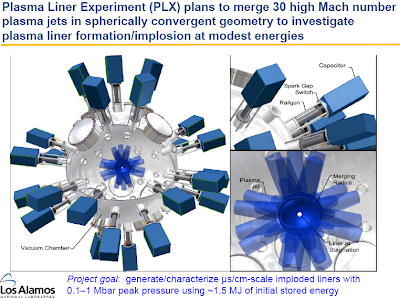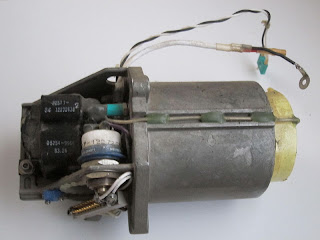Minirailguns for commerical nuclear fusion update
Updated: 2012-01-30 22:42:23
 skip to main skip to sidebar Pages Home Timeslide View Flipcard January 30, 2012 Minirailguns for commerical nuclear fusion update HyperV Technologies is trying to develop minirailguns for the world’s first commercially viable fusion reactor . technology Their research could result in the development of a controlled hot fusion reactor that is scalable to provide between 100 MW and 2,000 MW of clean base load electric power . There was a 20 page presentation from June of 2011. Imploding Plasma Liners as a Standoff Driver for Magneto-Inertial Fusion They are firing milligrams of plasma at 140 times the speed of sound . The commercial energy generating version will fire the plasmas at 285 times the speed of sound . The breakeven nuclear fusion facilities will cost less than 100 . million
skip to main skip to sidebar Pages Home Timeslide View Flipcard January 30, 2012 Minirailguns for commerical nuclear fusion update HyperV Technologies is trying to develop minirailguns for the world’s first commercially viable fusion reactor . technology Their research could result in the development of a controlled hot fusion reactor that is scalable to provide between 100 MW and 2,000 MW of clean base load electric power . There was a 20 page presentation from June of 2011. Imploding Plasma Liners as a Standoff Driver for Magneto-Inertial Fusion They are firing milligrams of plasma at 140 times the speed of sound . The commercial energy generating version will fire the plasmas at 285 times the speed of sound . The breakeven nuclear fusion facilities will cost less than 100 . million
 skip to main skip to sidebar Pages Home Timeslide View Flipcard January 30, 2012 Navy is scaling up a component to connect bigger capacitor banks to railguns Raytheon Company has been awarded a 10 million contract from Naval Sea Systems Command to develop a pulsed power system that will enable railguns to fire projectiles without explosive charges or rocket . motors The contract for the preliminary design of a Pulse Forming Network PFN is part of a larger effort by the U.S . Navy to develop a multimission weapon system for use on naval warships to defend and attack with pinpoint . accuracy Under the contract , Raytheon will provide the research and development of an advanced Integrated Power Systems power load module that may be used for PFNs to power future lasers , railguns or . radars
skip to main skip to sidebar Pages Home Timeslide View Flipcard January 30, 2012 Navy is scaling up a component to connect bigger capacitor banks to railguns Raytheon Company has been awarded a 10 million contract from Naval Sea Systems Command to develop a pulsed power system that will enable railguns to fire projectiles without explosive charges or rocket . motors The contract for the preliminary design of a Pulse Forming Network PFN is part of a larger effort by the U.S . Navy to develop a multimission weapon system for use on naval warships to defend and attack with pinpoint . accuracy Under the contract , Raytheon will provide the research and development of an advanced Integrated Power Systems power load module that may be used for PFNs to power future lasers , railguns or . radars